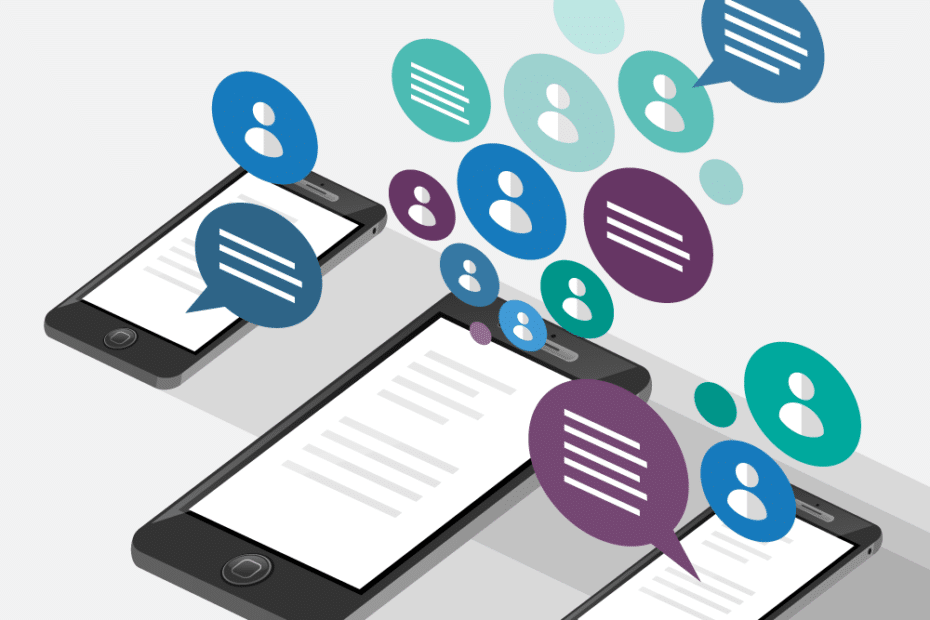📑 Table of Contents
In today’s fast-paced digital landscape, communication is key to business success. Mass text messaging, also known as bulk SMS, has emerged as a potent tool for reaching a wide audience instantly. With exceptional open rates and broad accessibility, mastering the art of sending mass texts is vital for businesses looking to enhance their engagement and marketing strategies.
This comprehensive guide delves into the nuances of mass text messaging, offering insights and advanced strategies for effective communication.
Understanding Mass Text Messaging
Mass text messaging is a method of sending a single text message to a large number of recipients at once. Utilized across various sectors, from retail to healthcare, it serves diverse purposes like marketing campaigns, alerts, reminders, and customer engagement. The effectiveness of mass texts lies in their simplicity, immediacy, and widespread reach.
The Advantages of Mass Text Messaging
- High Open and Response Rates: Text messages boast nearly a 98% open rate, significantly higher than emails.
- Cost-Effectiveness: It offers a cost-efficient alternative to traditional advertising mediums.
- Instant Delivery: Messages are received and read almost instantly, ensuring timely communication.
- Personalization and Segmentation: Tailoring messages to specific audience segments enhances relevance and engagement.
- Global Reach: The ubiquitous nature of mobile phones makes mass texting a globally accessible tool.
Essential Steps for Sending Mass Texts
- Selecting the Right Platform: The choice of a bulk SMS provider is crucial. Look for platforms offering robust delivery networks, easy integration, analytics, automation capabilities, and compliance with legal standards.
- Building a Compliant Subscriber List: Collect mobile numbers ethically and legally. Ensure you have explicit consent from users and provide clear opt-out options to comply with regulations like GDPR and TCPA.
- Crafting Compelling Messages: Your message should be concise, clear, and engaging. A strong call-to-action (CTA) is essential for driving the desired response. Learn more about how to craft compelling messages.
- Timing and Frequency: Optimize the timing of your messages to ensure maximum engagement. Also, maintain a balanced frequency to avoid spamming your audience.
- Segmenting Your Audience: Customize messages based on user demographics, behavior, or preferences. This segmentation leads to more targeted and effective communication.
- Leveraging Automation and Personalization: Use automation tools to schedule messages and personalize content for different audience segments, enhancing relevance and engagement.
- Analyzing and Optimizing: Utilize analytics to track the performance of your campaigns. Monitor metrics like delivery rates, open rates, click-through rates, and conversions to continually refine your strategy.

Advanced Strategies for Mass Text Messaging
- Interactive Messaging: Incorporate two-way messaging to engage in conversations with your audience, fostering a more interactive relationship.
- Integrating with Other Channels: Combine mass texting with other marketing channels like email, social media, and direct mail for a comprehensive communication strategy.
- Using Multimedia: Employ MMS (Multimedia Messaging Service) to send images, videos, or audio clips, making your messages more engaging and informative.
- Geotargeting and Localization: Send messages based on geographical location or local languages and cultural nuances to increase relevance and effectiveness.
- AI and Machine Learning: Implement AI-driven analytics to predict the best times to send messages and to personalize content based on user behavior and preferences.
While mass text messaging offers numerous benefits, it’s crucial to navigate its challenges effectively. Understanding these challenges and adhering to best practices ensures a successful and responsible use of this communication tool.
Challenges in Mass Text Messaging:
- Regulatory Compliance: Navigating the complex landscape of telecommunications laws and privacy regulations is a significant challenge. Non-compliance can lead to legal issues and damage to brand reputation.
- Message Relevance: Ensuring that each message is relevant to its intended audience is vital. Irrelevant messages can lead to high opt-out rates and diminished effectiveness.
- Maintaining Engagement: Keeping your audience engaged over time without causing message fatigue is a delicate balance.
Best Practices for Effective Mass Text Messaging:
- Prioritize Consent and Privacy: Always obtain explicit consent before sending texts and provide a clear opt-out mechanism. Respect the privacy of your recipients and safeguard their data.
- Personalize and Contextualize: Personalize messages based on the recipient’s preferences, past interactions, and demographic data. Contextualizing messages makes them more relatable and effective.
- Integrate with CRM Systems: Syncing your mass texting platform with customer relationship management (CRM) systems can offer deeper insights into customer behavior and preferences, allowing for more targeted messaging.
- Test and Refine: Regularly test different aspects of your messages, including content, timing, and frequency. Use A/B testing to determine what works best for different segments of your audience.
- Offer Value: Ensure that each message sent provides value to the recipient, whether it’s informational, promotional, or transactional. This approach helps maintain interest and engagement over time.
Future Trends in Mass Text Messaging
As technology evolves, so does the landscape of mass text messaging. Staying ahead of these trends is crucial for businesses looking to maintain a competitive edge.
- Rich Communication Services (RCS): RCS is set to revolutionize SMS with richer, app-like experiences, including high-resolution images, video, and interactive elements.
- Increased Automation and AI Integration: The use of AI and machine learning in mass text messaging is expected to grow, offering more personalized and efficient communication strategies.
- Enhanced Interactivity: Future mass text messaging campaigns will likely focus more on interactivity, engaging customers in two-way conversations and providing instant responses through AI-driven chatbots.
- Greater Integration with IoT Devices: As the Internet of Things (IoT) expands, mass text messaging could play a significant role in automated alerts and notifications from various devices.

Conclusion
Sending mass texts is more than just broadcasting messages; it’s about building relationships, engaging with your audience, and delivering value. By embracing these advanced strategies and best practices, businesses can leverage the full potential of mass text messaging. Whether it’s for marketing, alerts, or customer service, effective mass texting can transform your communication strategy, driving engagement and business growth.
Remember, the success of mass text messaging lies in understanding your audience, respecting their preferences, and continually optimizing your approach. Embrace the power of bulk SMS and watch as it revolutionizes your outreach efforts, one text at a time.
